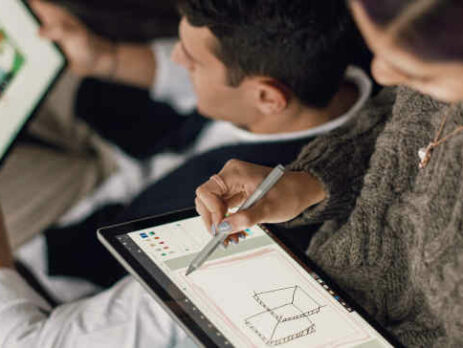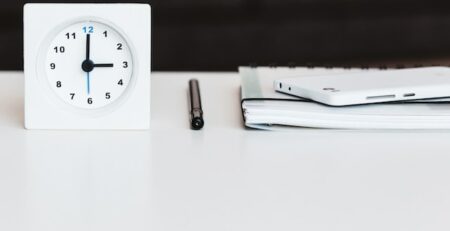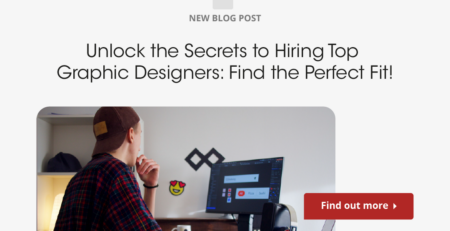Neumorphism: Lasting Design Style or Short-Term Trend?
When digital user interfaces were still in their infancy, a design style called skeuomorphism was the most popular way to illustrate digital functions. With this style, designers built symbols and buttons that mimicked the shape and design of real-world objects. Since users were already familiar with the objects depicted, using digital designs was much more intuitive.
Imagine the folders used to store files or the floppy disk used to save a document. As the internet, apps, and software developed, users became familiar enough with functions to understand them without needing a real-world corollary. Flatter, more minimalist designs picked up steam.
In 2020, a style derivative called neumorphism gained popularity fairly quickly. It combines the 3D and detailed graphics of skeuomorphism with the clean design and utility of minimalism. It’s a new direction for user interfaces, but is it here to stay or a temporary gimmick?
Read on to find out everything you need to know about neumorphism, how it’s employed, and its prospects for interface designs in the future.
Skeuomorphism Vs Neumorphism
People who pay attention to design trends have likely come across the flat design vs. 3D debate many times already. UI designers and others are constantly on the lookout for the next big thing that will take the place of flat design. Many view neumorphism as that replacement.
Skeuomorphism has several shortcomings. Although it taps into an existing codification so users can understand functions more easily, it can also interfere with a good user experience. For example, an extremely detailed skeuomorphic design might cause information overload or burden processing capabilities and slow everything down.
Realistic designs frequently lead to unneeded dead space and minimize the actionable areas of the webpage. You don’t need a full TV set mock-up on a streaming site, for example. The border is a waste of page real-estate.
Apps and web pages have functions that are accomplished with simple sliders. Older programs had knobs that mimicked the volume knobs on radios or speakers, but clicking on a round knob and dragging your cursor around is more work than is necessary to simply turn up the volume or increase an audio filter’s effect.
Neumorphism doesn’t seek to copy this kind of realism from skeuomorphism. It borrows much of the simplicity from flat designs but it brings back some of the illustrative flair from the older style, such as drop shadows and gradients.

These design elements help to make buttons and menus more visible and offer entirely new ways to show their status. If you think about a completely flat button design, it’s difficult to show that the button has been clicked without changing the color or the shape of the button. The element doesn’t stand out from the background in a 3-dimensional way.
Why is Flat Design So Popular?
Whether you think it’s a fad or a game-changer, there’s no denying that flat designs have taken the internet and app world by storm. There are some disadvantages to the style, notably an imaginative limitation for designers. But there are also plenty of reasons that this style has become as popular as it is.
Here are some of the most common characteristics of flat design:
- Simplicity
Historically, flat design draws from a movement called the International, or Swiss, Style. Around the middle of the 20th century, the International Style became one of the most popular design trends because it offered easy legibility and clarity compared to the ornate styles that preceded it.
That doesn’t mean the designs themselves are dumbed down at all. They still have clear visual hierarchies and messaging, but they generally aim to accomplish this task without relying on lots of text or other indicators.
The color palettes and shapes used in flat design are less complex so that they’re more intuitive for the user. Reduced clutter is the result, which makes for clearer organization and faster communication.
- Readable Typography
Your word processor has tons of typefaces and there are even more available from sites on the internet. But if you look at the designs from some of the biggest companies, you’ll notice that they don’t use fonts with elaborate serifs or kitschy themes. For the greatest possible readability, simple fonts are employed with bold and eye-catching colors.
Although text is usually used sparingly in minimalist flat design, the words that are on the page are immediately understandable so that a more informed user experience develops.
Direct fonts without decoration are by far the most common in flat design, but there is still enough variation between typefaces and emphasis to keep these simple fonts interesting to users.
- Bright Colors & Contrast
Pastels are experiencing a surge when it comes to logos, graphic design, and user interfaces. While some designs do employ muted earth tones, even those instances also take care to make them bright at least in comparison to other design elements.
Separate fields are often separated by stark color differences, especially since flat design doesn’t afford any contrast to do the same job, and creating a literal grid out of lines is generally not an appealing approach.
The contrast between these colors allows for better organization. It aims for a faster user journey, which should also translate into a much better user experience overall. These bright colors don’t have to be neon bright, but they are almost always unique enough to help the user associate them with the design.
The benefits of flat design help explain why it’s been one of the most popular design trends of the last few years. For one thing, flat design creates a straightforward user experience and makes the functions of an app or website incredibly clear to the people who use them.
From a business perspective, these designs are also way more scalable than the older, more detailed designs. Building a responsive web design with a minimalist UI interface allows the same product to work across platforms and screen sizes. The company won’t have to pay for a new redesign every time they need the design to work in a new context.
Users aren’t heavily impacted by the business aspect of the design, though. The biggest draw of minimalist flat design is that it doesn’t require lots of time to look at. Users can quickly see new information, comprehend it, and move on. Ornate designs might look flashier, but they almost always slow down the user experience.
Flat Design Vs Neumorphism
So, if flat design is so great, why are there huge numbers of designers on the lookout for the next big trend to follow it up? To put it in the simplest terms, it’s because flat design has become so universal that people are starting to get bored with it.
Design thinking is built for problem-solving. Users are facing new problems with new technology and new products all the time and the same old flat design can’t continue to be the only solution in the design wheelhouse. Besides, users get bored when everything looks the same.
Neumorphic design seeks to solve this problem by borrowing some of the visual elements of skeuomorphism and combining them with the clarity of flat design. By merging the 3D look of physical buttons with the visual hierarchies of flat design, neumorphism builds a better experience. It’s also very refreshing to see design elements in detail when compared with the flat 2D look that’s almost ubiquitous now.
But neumorphic design doesn’t exactly emulate real-world devices like its predecessor did. As we’ve already mentioned, web users have built their own meanings and developed expectations as the internet has grown. For many young people, the physical devices that skeuomorphism represented aren’t things they’ve ever personally experienced.
Instead, a neumorphic user interface brings some design elements such as drop shadows, layering, and gradients. Flat design was great for giving designers a new, cleaner approach, but in many ways, we’ve reached its limits. Neumorphism is, for now, the biggest contender to take its place.
Elements of Neumorphism
How does a neumorphic user interface differ from a flat design, exactly? Take a look at some of these defining characteristics and you’ll begin to understand how neumorphism is a new direction and not simply a development or variation of flat design.
1- Elevated Cards
In user-centered design, a “card” is the name given to a container of related information. If you’re looking at subscription options, you might have one vertical card each for daily plans, monthly plans, and yearly plans.
Flat design, as the name implies, doesn’t differentiate these cards from the background of the page unless they’re different colors. Neumorphism uses drop shadows to create an elevated look for the card. Unlike other popular design trends like material design, which makes the card look as if it’s floating above the background, a neumorphic interface makes the card appear as if it is a raised part of the background.
2- Increased Affordance
When you can add new illustrations to beveled buttons, you get the opportunity to instruct your users further on what functionality is available to them with the product. In design, this is called affordance.
Let’s say you have a simple app that’s designed to change the lighting setup on some pre-programmed lights. The user can toggle between turning the lights off or on, change their color, and make them flash in a few different patterns.
A flat design might require several different cards or buttons to show these functions because the user won’t know intuitively to push a button more than once to get to different options.
With a neumorphic interface, the 3D beveling allows for more changes in the buttons. You might also have the activated button display reveal a meter for changing color and allow a further button press to change the speed of the lights. As you can see, the simple addition of physicality makes neumorphism more versatile.
3- Background Color Unity
Unlike flat design and material design where the background color of the overall page can be completely different from the background of a card or button, neumorphism uses the same or similar colors in both places to create a more physical look of unity across the whole design.
That might not seem like such a big deal, but that unison between background and individual elements makes the design feel like a physical object. Unlike skeuomorphism, it doesn’t emulate a real object. It creates a new kind, which has lots of appeal for users who are used to flat design.
4- 3D Interaction
Buttons and cards have new ways to show that they’re activated in neumorphic designs. While flat design is limited to color changes or the introduction of a new element to show that buttons have been pressed, neumorphism allows for 3-dimensional representations like concave-convex transformations. The absence of this possibility, say by making a card or a button 2D and greyed out, can be used to show that a certain function is not possible in a given moment.
The look and feel of a neumorphic design make it seem like the whole design is an object that exists within the screen. Rather than a simplified system for the user to navigate, this new kind of design gives the impression that they are holding a new device in their hand each time they switch to a new app or web page.
This 3D physicality also makes it easier to differentiate between several services on one page. Alternating functions from the same company can be displayed so that they stand out on their own, even from other elements on the same site. The user can feel as if they have a different machine for subscriptions, browsing, saving favorites, or adjusting settings.
Is Neumorphic Design Here to Stay?
Although it’s a significant improvement over other popular design trends of late, it would be a mistake to say that neumorphic design has completely changed the game. But we should also bear in mind that this trend is still very new.
In terms of possibility, neumorphic design could go in many different directions. The ability to have 3D representations of buttons and cards is only the first step. It’s no stretch of the imagination to expect that we’ll have designs with different faces and a 3D toggle mode become more popular over time.
If there is one thing you can say about neumorphic design, it’s that it doesn’t cut out the possibility of a new style developing. Something entirely new could still come along and displace it, but for projects that require a scalable minimalist design, it’s hard to think of a UI interface that could fit the role better than neumorphic design.
As for what designers will do with the new physicality of this approach, there’s no way of knowing. As people born in the new millennium grow into roles in creative and art departments, we’ll probably start to see their attachment to and translation of real objects into neumorphic design. They won’t have as much experience with analog real-world technology such as stereos, record players, or newsstands the way older people do.
It will be interesting to see how these new attachments and continued innovation in apps and digital services affect the way people associate meaning with elements of a design. It’s abundantly clear that the huge increase in digitization and online platforms we saw in 2020 will continue throughout the coming decade and neumorphic design looks like it will be the defining look of the next few years at least.

Conclusion:
The additional physicality that neumorphism brings to the table is a relief to users who are experiencing fatigue from the huge increase in screen time recently. Although it might seem like such a slight departure from the minimalist flat and material designs that came before it, neumorphic design opens up new possibilities for communicating with users in novel ways.
We can’t say for certain what the future holds for this particular design approach. Perhaps something completely revolutionary will come to take its place, but it’s hard to imagine that such a thing would happen without some elements of neumorphism being retained.
From a design perspective, it’s certainly a relief to see innovation and experimentation in products. With so many different companies and products in the digital sphere today, it can be difficult to discern between them all. At the very least, the appearance of neumorphism on the design stage shows that users are still hungry for new design approaches and designers are still innovating to build them.












